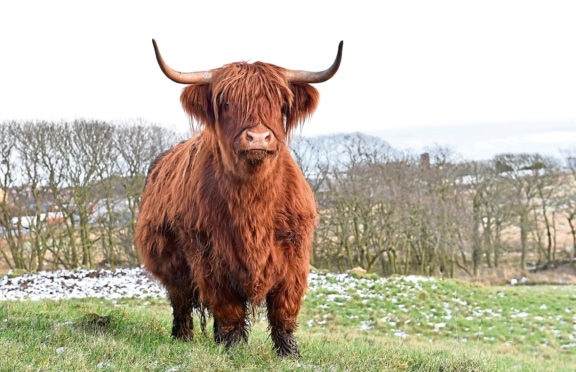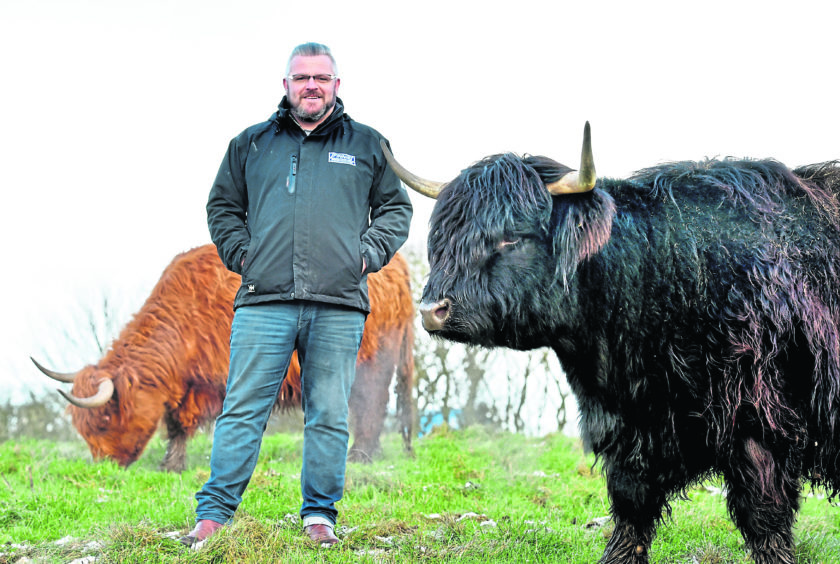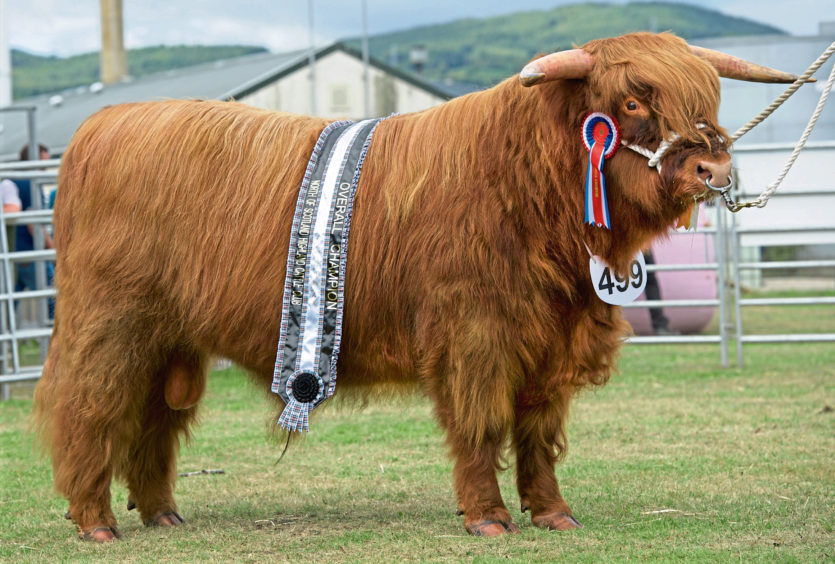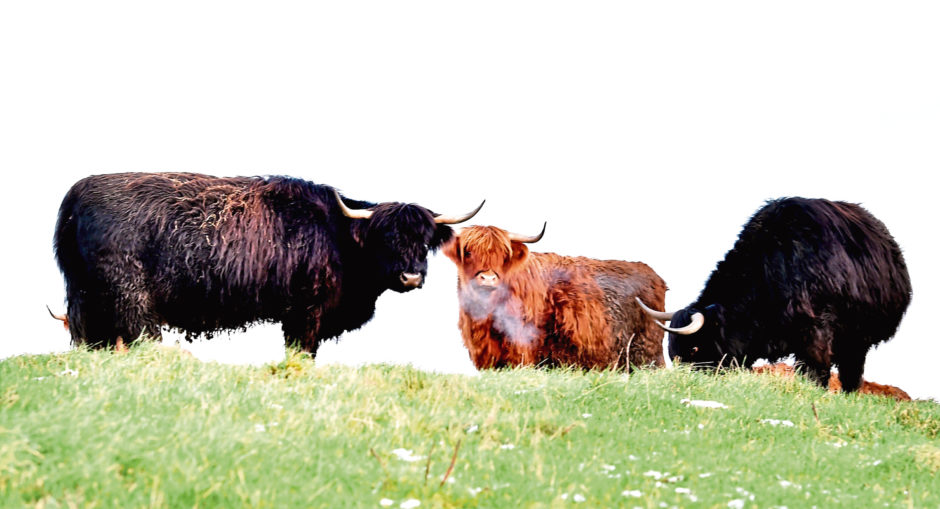Highland cattle breeders from the UK and overseas are gearing up for the annual February two-day fling at Oban, where the very best of the breed is put on show and sold through the auction ring.
The event, which kicks off with the show tomorrow, has attracted the largest entry for several years, with a total of 55 bulls and 70 females on offer.
Also forward for the following day’s sale is a record entry of 12 black Highland bulls and a draft consignment of 13 in-calf heifers from Iain and Sheena Graham’s Killochries fold.
One exhibitor busy preparing their entries is north-east breeder and society council member Craig Finnie, who runs his Richmondhill fold alongside the family’s Finnie 4×4 vehicle sales business at Peterhead.
Craig grew up with Highland cattle at the farm adjacent to his grandparents and was always eager to get involved with the breed – but never did he think he would be running a 24-cow fold 15 years later.
The fold was established in 2004 when Craig bought two pedigree heifers from the Cnoc fold at the Royal Highland Show as a part-exchange in the sale of a Nissan Navara King Cab pick-up. He then purchased two heifers from the Ardbhan fold and in 2006 paid 5,000gn for Connachat of Greybrae.
Like many other breeders, Craig believes people should be made more aware of how efficient Highland cattle are. He said: “Highland cattle get dismissed as a hobby breed, but they cover all bases and can be crossed well with other native or continental breeds.
“It’s a case of output over input as you don’t have to put as much into Highlanders – they’re low maintenance, hardy and good, milky mothers but they’ve still to be looked after. When you consider the level of output and the lifestyle of the Highland stots that I breed, it’s as close to free range and natural as you can get.”
Craig’s cattle are outwintered all year round and survive on the harsh, salty cliffs of Boddam and Longhaven, on the edge of the North Sea.
Cows calve outdoors from March onwards and receive hay and silage, with mineral buckets given on the run-up to calving.
“The Highland cattle breed is probably all that would stand up to the weather conditions here,” said Craig.
“They do generally calve themselves which is an advantage when we are running a second enterprise.”
Not only does Craig favour Highland cattle for their strong maternal instincts and easy calving, but he also remarked on the breed’s longevity trait.
He said: “Although there is a tendency to calve heifers when they’re slightly older, Highland cows generally last longer than a lot of other breeds. The oldest cow in the fold is 14 years old but in the past, we’ve had a cow have a calf at the age of 21 and this is quite common.”
Quality in the fold has been continually improved with the use of the home-bred stock bull, Charles of Richmondhill, bred from one of the fold’s foundation females, Banarach of Cnoc.
He is sire to most of Craig’s show winners, including the April 2016-born bull Philip of Richmondhill, one of the fold’s entries for Oban. He stood champion at last year’s Black Isle and New Deer shows.
The other entries for Oban include two yearling bull calves which are sons of the other stock bull in the herd – Rod of Richmondhill, bred from a Glengorm female.
Just recently, Craig went down the commercial route and crossed plainer Highland heifers with the beef shorthorn bull Ballinney Emblem.
He said: “The amount of grazing we get each year varies so I wanted a breed that would allow me to sell stock quicker. The first batch of six Highlander cross shorthorn stots were finished at 19 months of age and averaged 265kg when sold to Millers of Speyside.
“I’ve kept the Highland cross heifers and plan to cross them with a Limousin so that I’ll hopefully have a decent cow and calf unit to sell.
“By using the likes of a Limousin, I would have a good calf and an efficient suckler cow to sell as one unit. I’m also going to bull the Highland heifers earlier as we have seen other folds do this successfully.”
As for what the future holds for the Highland cattle breed, Craig said: “I reckon there is a bright future ahead for the breed, especially in uncertain times. Surely there is more money to be made in a breed that requires very little input and that can be crossed to any other breed to produce quality beef carcasses or a hardy suckler cow.”



